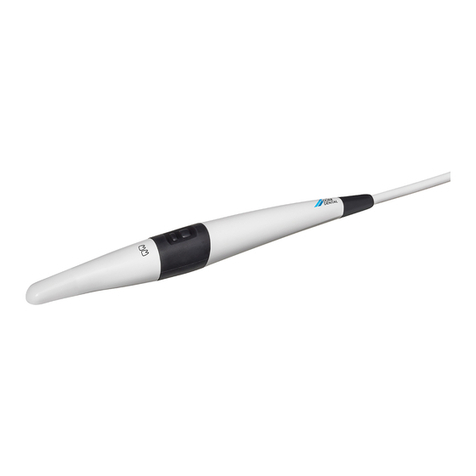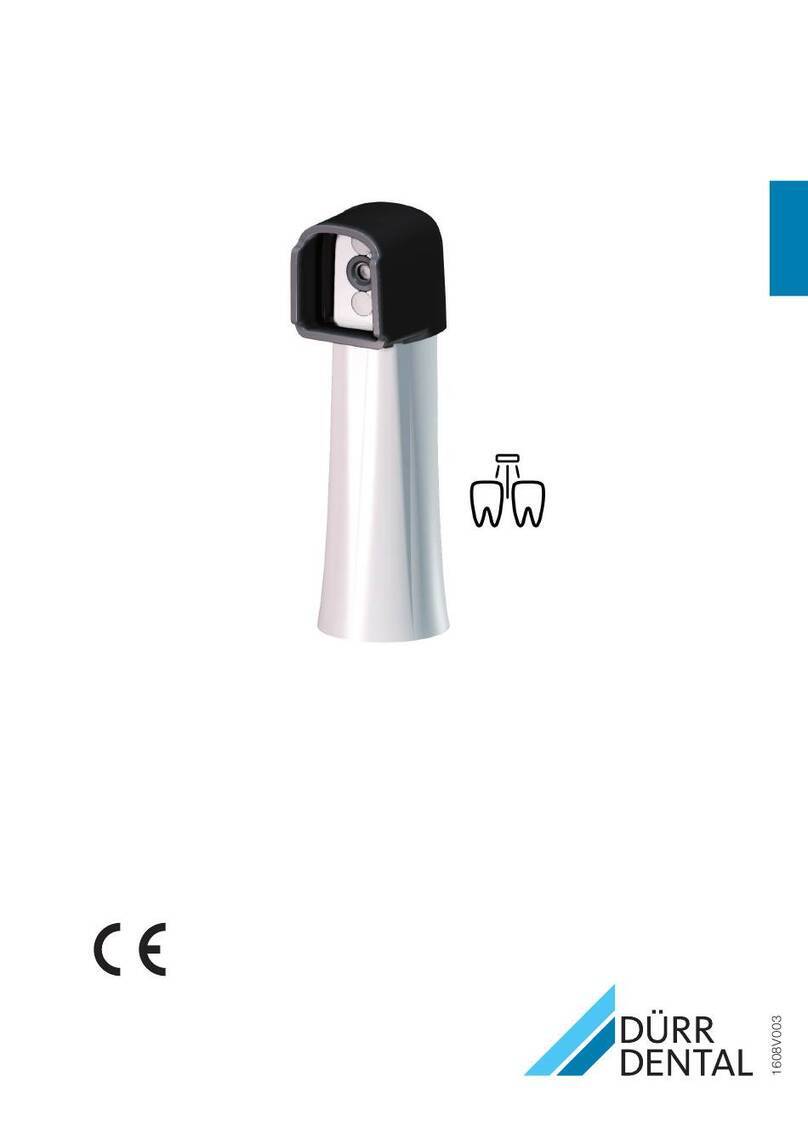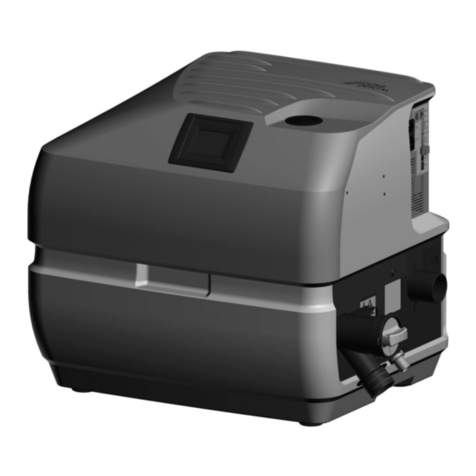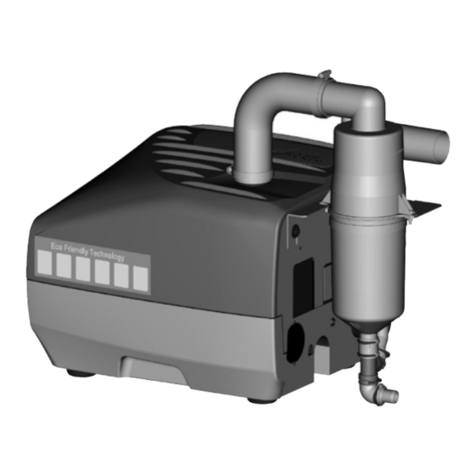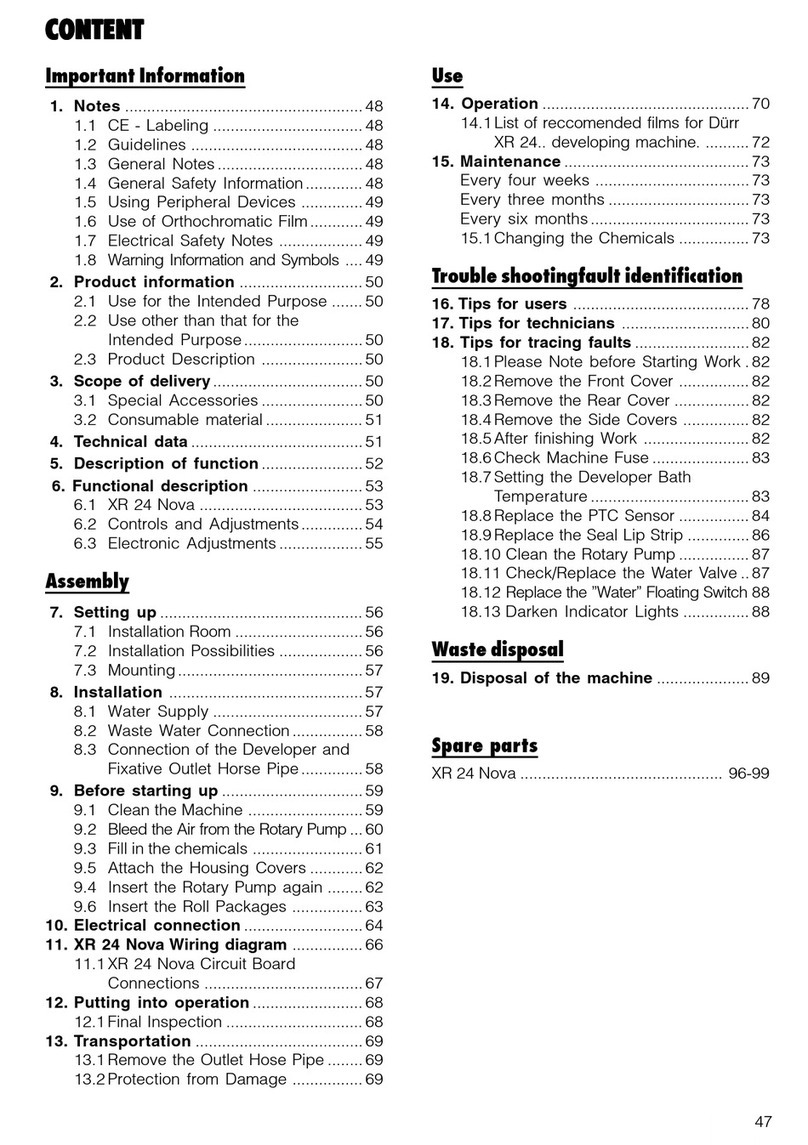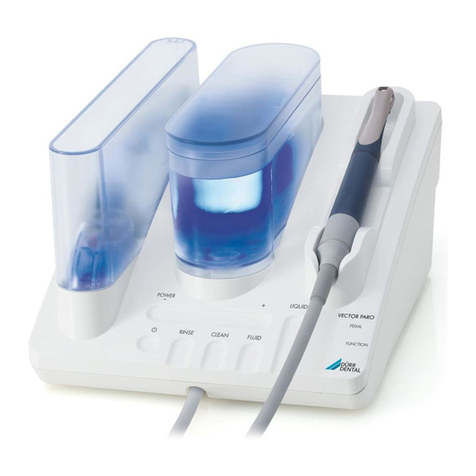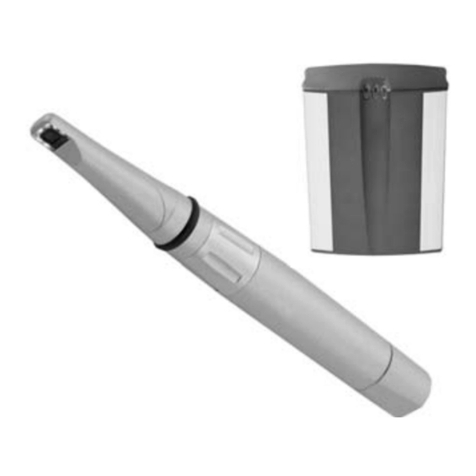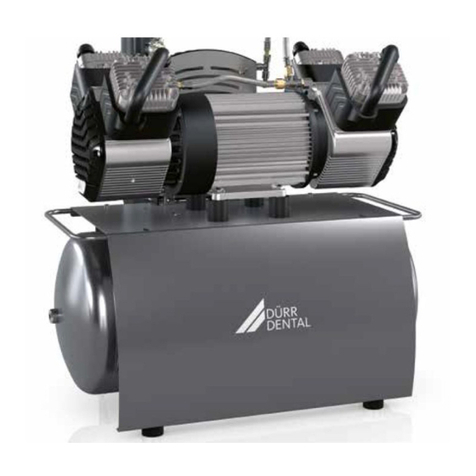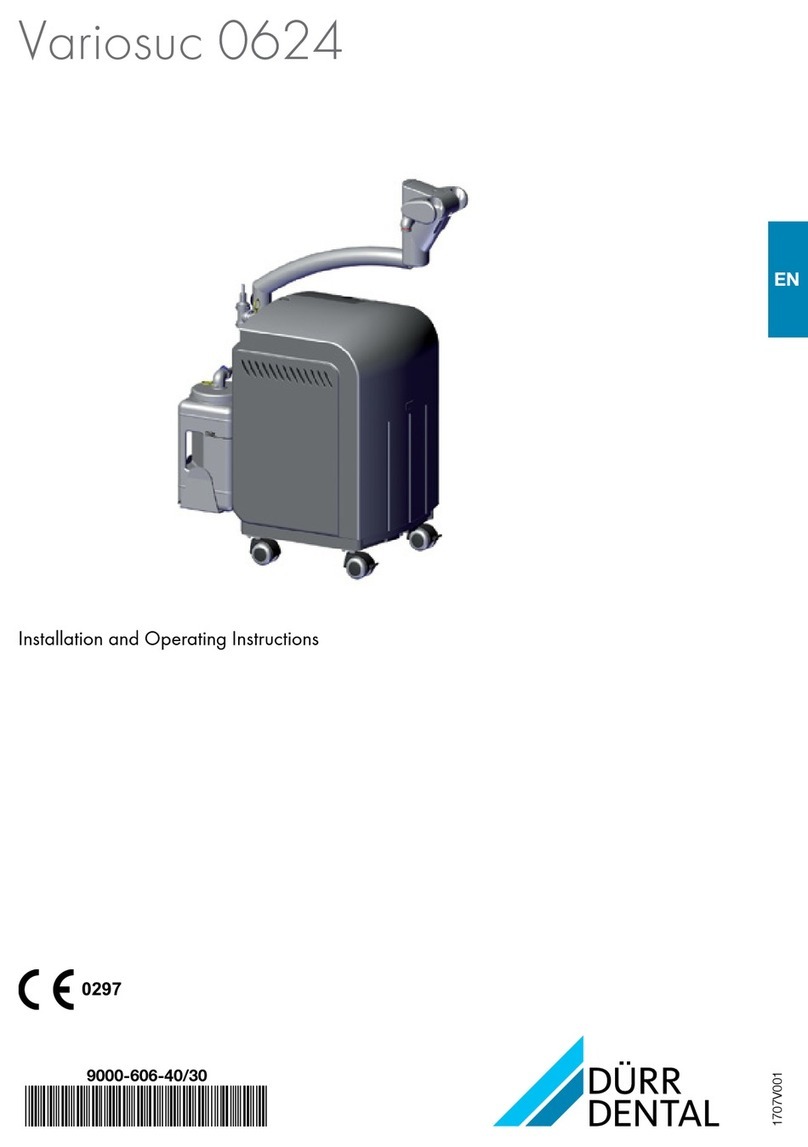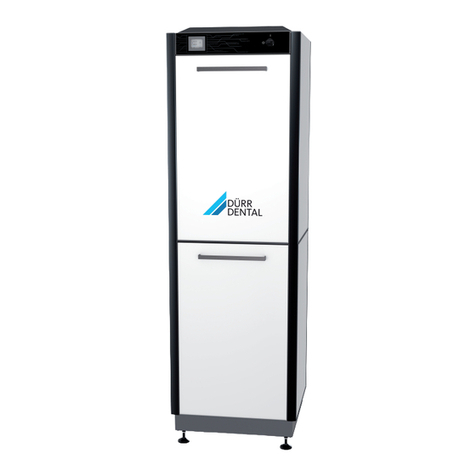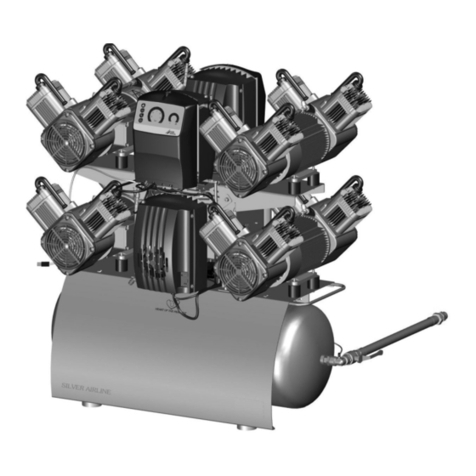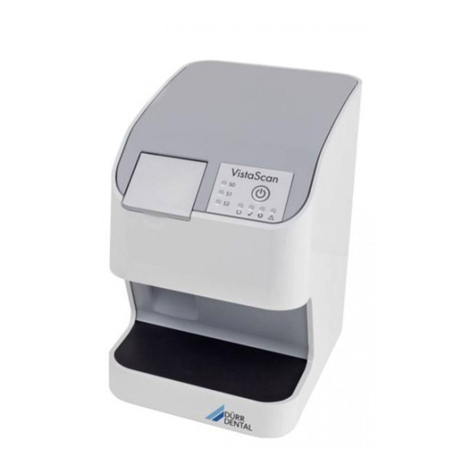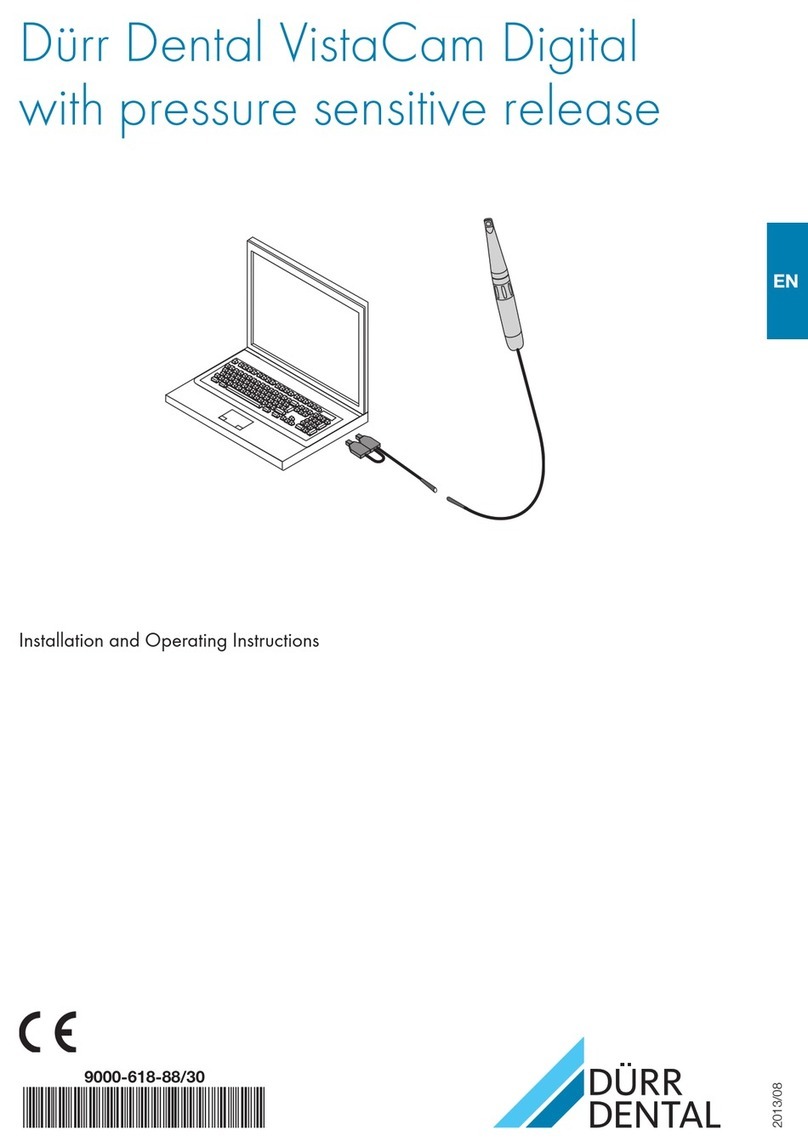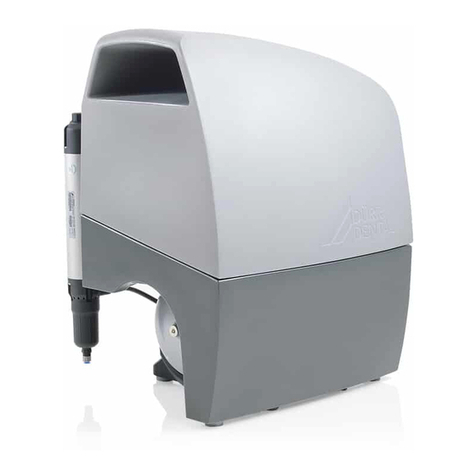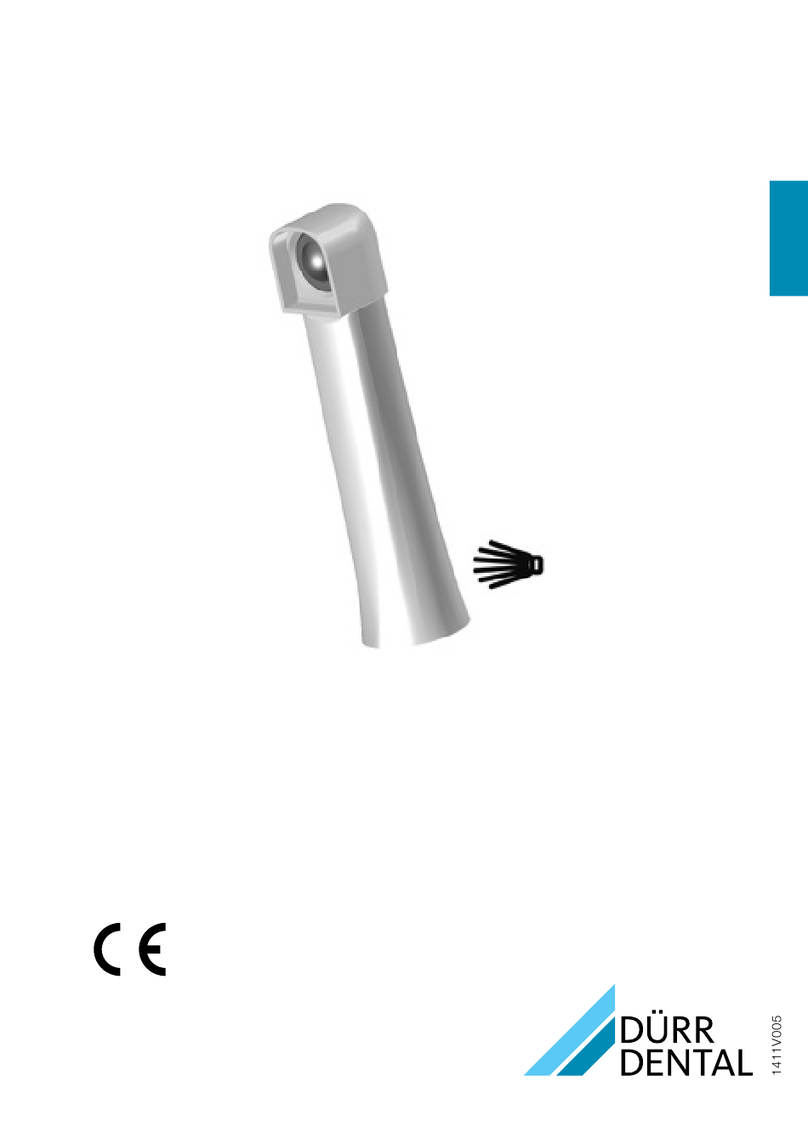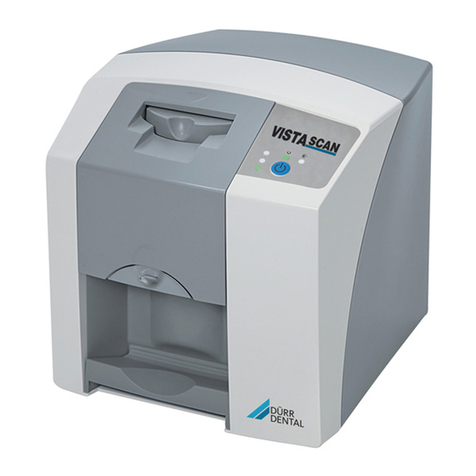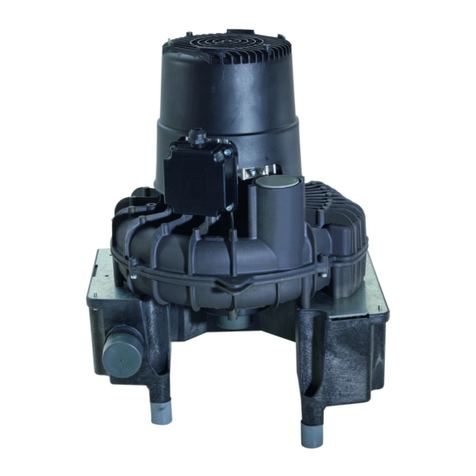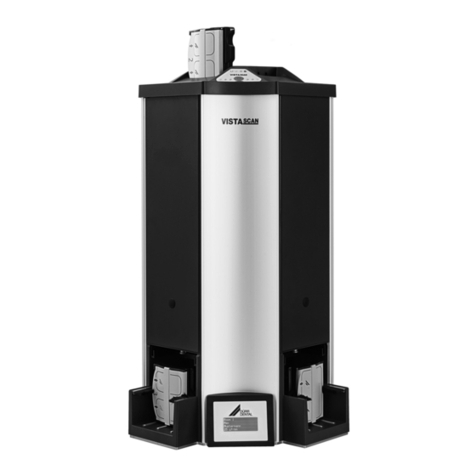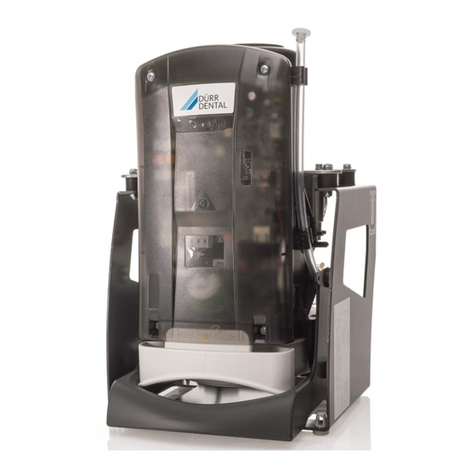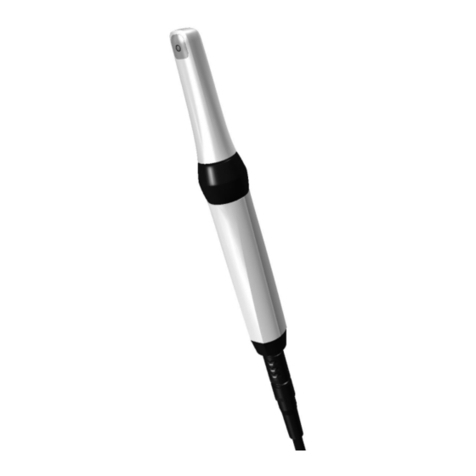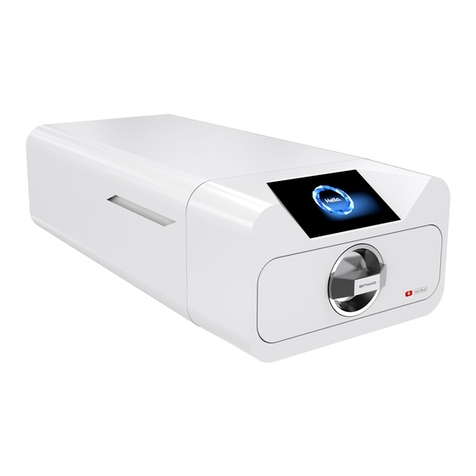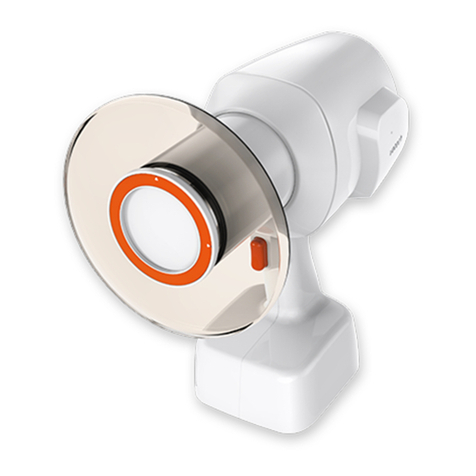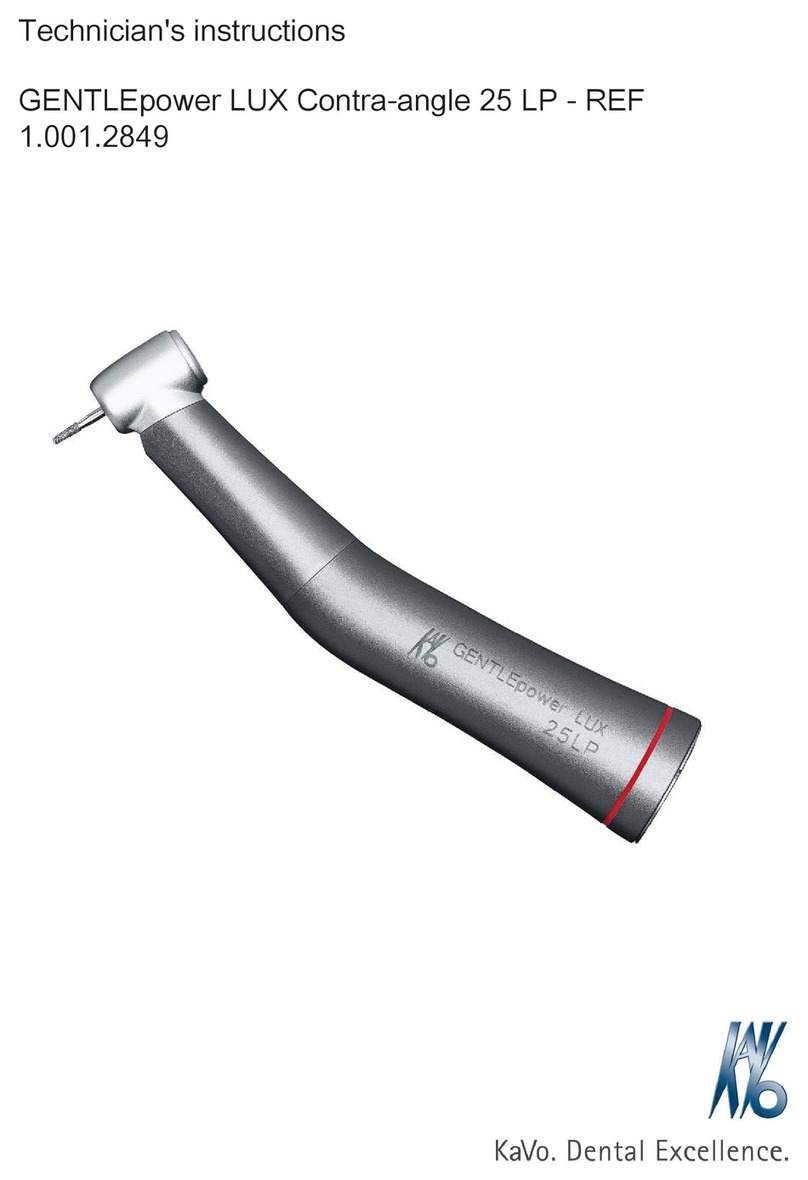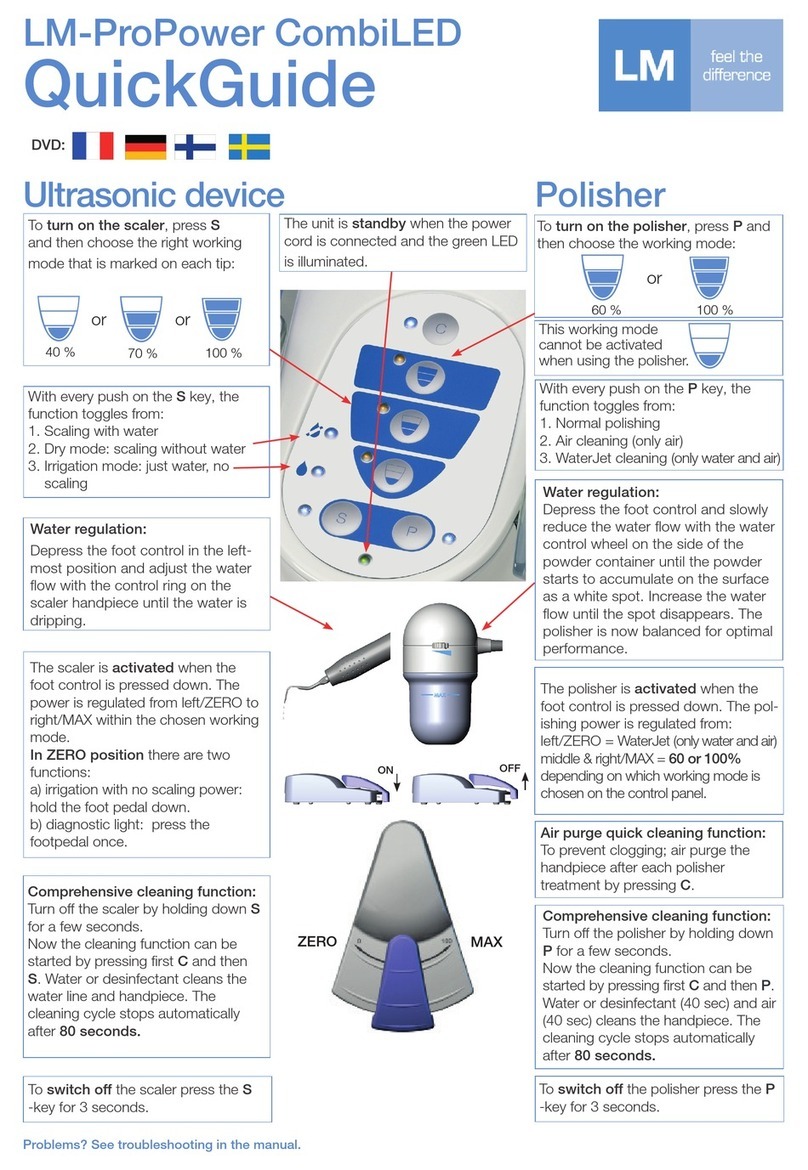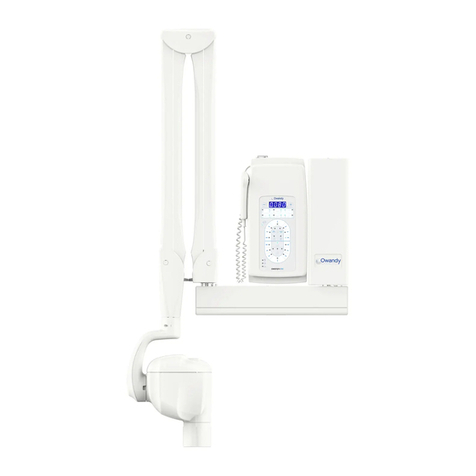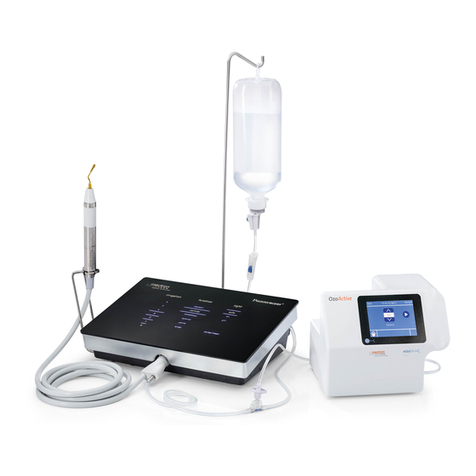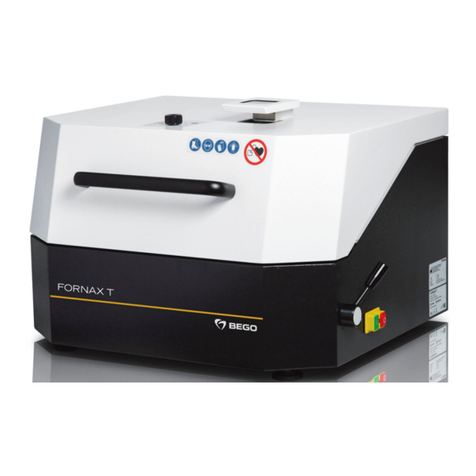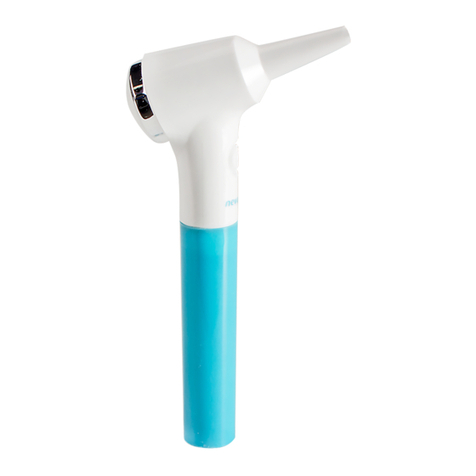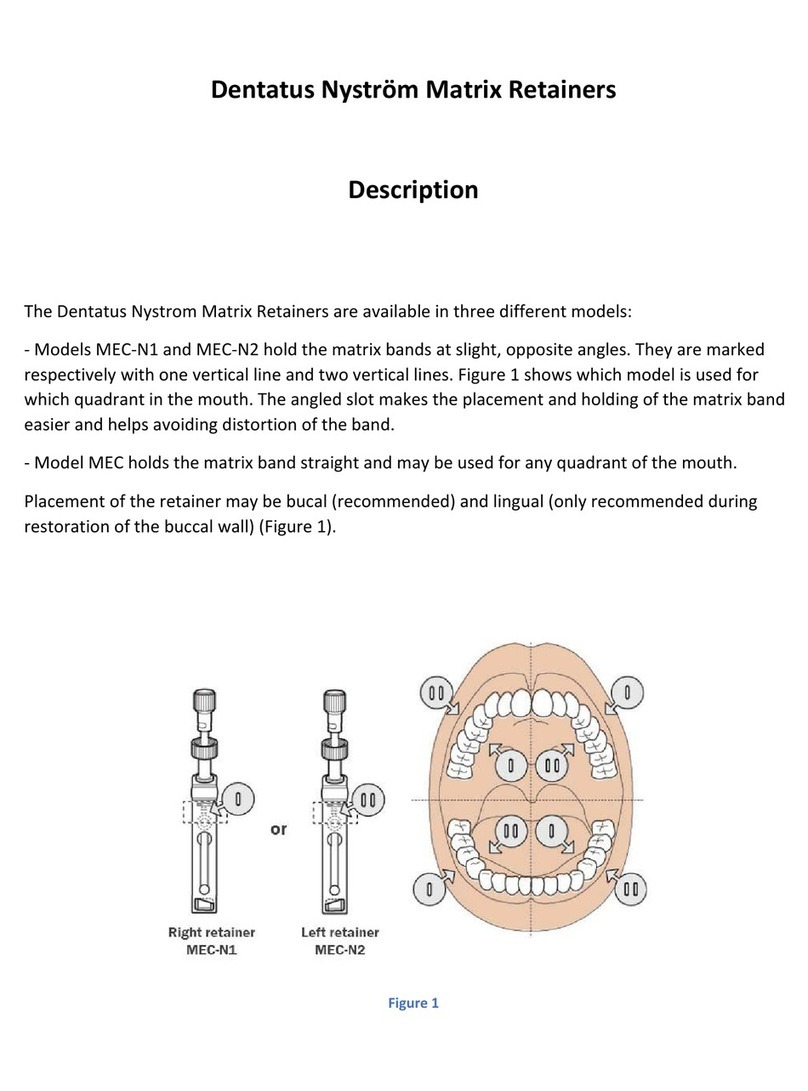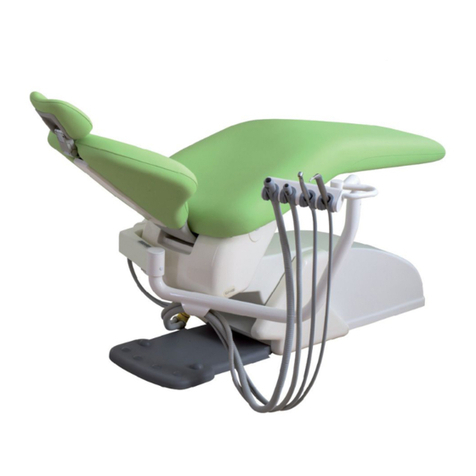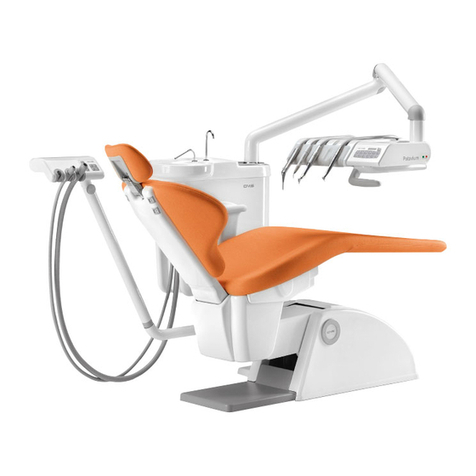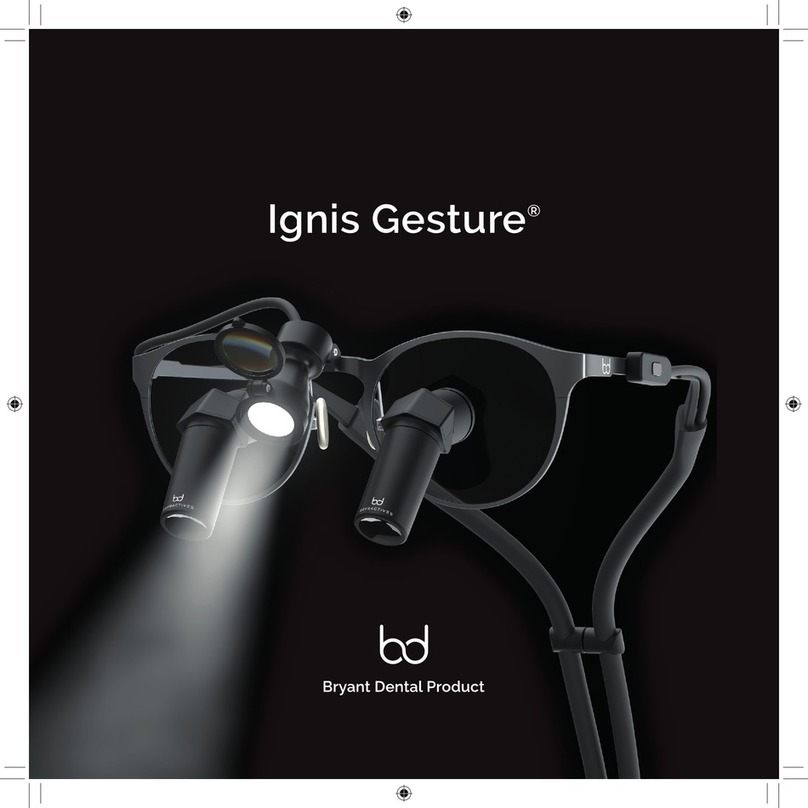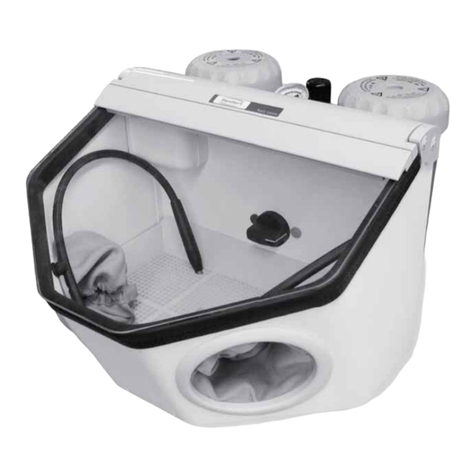
❯Do not use the Hygowater system with liquids
other than water or without filters. The unit is
designed to be used to disinfect processed
water in the dental treatment unit, with the
quality equivalent to that of drinking water.
Using the unit with liquids other than water
and/or without the correct filters will damage
the unit and make it less effective.
❯The unit must always be kept perfectly upright.
Do not try to operate the unit when it is on its
side or tilted, as water will leak out and poten-
tially cause damage to the unit or its surround-
ings.
❯The use of oxidative disinfectants, such as free
chlorine, represents a potential source of corro-
sion. The Hygowater system works with a low
[...]. Make sure that your dental treatment unit
is suitable for use with processed water of
drinking water quality in line with the WHO
Guidelines for Drinking-Water Quality and the
limits set out by the EU.
❯Use water from the Hygowater with caution.
Always read the label and product information
before use.
2.2 Intended use
The unit generates active chlorine* for disinfec-
tion of water pipes for dental treatment units.
Spectrum of activity: reduces water bacteria –
including legionella bacteria.
*Active chlorine is formed through electrolysis
from (sodium) chloride and is the designation
used by the EU in the Biocidal Products Regu-
lation.
2.3 Improper use
Any use of this appliance / these appliances
above and beyond that described in the Installa-
tion and Operating Instructions is deemed to be
incorrect usage. The manufacturer cannot be
held liable for any damage resulting from incor-
rect usage. The operator will be held liable and
bears all risks.
❯Do not use the Hygowater system on dental
treatment units when other disinfection sys-
tems are switched on. This may stop the
Hygowater from working as effectively or at all.
WARNING
Risk of explosion due to ignition of
combustible materials
❯Do not operate the unit in any rooms in
which inflammable mixtures may be
present, e.g. in operating theatres.
2.4 Systems, connection with
other devices
Additional devices connected with medical elec-
trical devices must be proven to conform with
their corresponding IEC or ISO standards. All
configurations must continue to comply with the
standard requirements for medical systems (see
IEC 60601-1).
Whoever connects additional devices to medical
electrical devices automatically becomes the sys-
tem configurator and is responsible for ensuring
that the system corresponds with the standard
requirements for systems. Local laws take priority
over the requirements outlined above.
2.5 General safety information
NOTICE
Danger to components due to electro-
static discharge (ESD)
❯Establish equipotential bonding
between the person carrying out the
work and the surroundings, e.g. via a
wrist strap that is connected to the
basic unit. Here, the basic unit must be
earthed via the earth terminal.
❯Always comply with the specifications of all
guidelines, laws, and other rules and regula-
tions applicable at the site of operation for the
operation of this unit.
❯Check the function and condition of the unit
prior to every use.
❯Do not convert or modify the unit.
❯Comply with the specifications of the Installa-
tion and Operating Instructions.
❯The Installation and Operating Instructions
must be accessible to all operators of the unit
at all times.
Important information
4 8500200015L02 1910V001
EN
